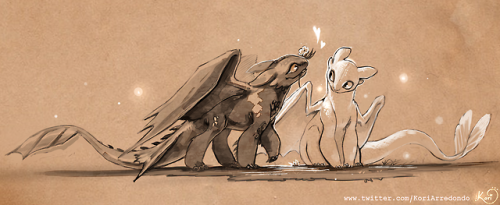Please Read This And Educate Yourself On Asexuality!
please read this and educate yourself on asexuality!










happy International Asexuality Day! 🖤🤍💜
More Posts from Kris10freeman and Others
“We chose the term “asexual” to describe ourselves because both “celibate” and “anti-sexual” have connotations we wished to avoid: the first implies that one has sacrificed sexuality for some higher good, the second that sexuality is degrading or somehow inherently bad. “Asexual”, as we use it, does not mean “without sex” but “relating sexually to no one”. This does not, of course, exclude masturbation but implies that if one has sexual feelings they do not require another person for their expression. Asexuality is, simply, self-contained sexuality.”
— The Asexual Manifesto, Lisa Orlando and Barbara Getz, 1972

Day 3: Fi
I did one sketch of Fi and didn’t really like it so I redrew her in my bigger sketchbook.
IMPORTANT!!!

that is all

“For You”
An artist : Aw man! I saw my arts were reposted on Instagram. I’ve asked them to take my arts down but they ignored me.
Me : Say no more! Click this link, then click ‘fill out this form’. Fill the form and wait for about 1-2 days, the staffs will remove the image you were reporting from the reposter’s account :^)

I was walking through the toy aisle at Target when I found this thing and had a VIOLENT AND IMMEDIATE FLASHBACK to when JP first came out and they had a bunch of REALLY COOL T Rex toys that I would have sold one of my scrawny small-child limbs for but my mother wouldn’t get me one because they were “too violent and also ate people” :(

I just found out that today was International Asexuality Day so I had to quickly scribble this down!! Hope all my fellow aces out there are having a lovely day! ~<3

follow

oh ya I never uploaded my final version of the sketch!!
Drawing Link makes me so happy :’)
Emotional Abuse can turn every day interactions into problems.
I have had a recent experience while in training for my new job and I thought I might express some thoughts about it.
The woman who has been training me is sweet and I like her, but her methods of critique and helping me get things correct is a bit…harsh from my perspective. And she’s not trying to be at all. She is really trying to help.
However, emotional abuse taints the perception and actions of a victim even years after abuse. And the worst part is that each victim’s experience is varied. The stereotypes of abuse we see in our media is just that: a stereotype. Abuse comes in many forms and each individual will have different triggers. However, abusers do have some commonalities, usually by being controlling or will get violent over little, silly or normal things.
I figured it would help to re-frame the way she approached it and maybe some people out there will consider this in the future. We obviously can’t know someone’s history and often you can’t pick out an abuse victim from a crowd. But to help avoid triggering emotional distress and protective behaviors, I think people aught to at least be aware and maybe avoid the following approaches when teaching or instructing someone else. ____________________________________________________
Over correcting a former victim can come off as a bit over-bearing, especially when their abuser was extremely controlling. Mine (who happened to be my mother) was not a very nurturing type. So when she would try to teach me how to do something, if I did it wrong during the first try she would often just take over. And it wasn’t like, “Oh sweetie let me do it.” No, I was more shoved out of the way by an agitated/angry parent who complained that I was unable to complete the task.
Behaviors over correcting caused: -Hesitating to help someone with a task unless they give permission. -Emotional distress and agitation when being corrected on every task, shot etc.
Things to change: -Correct when things need to be early on in training, gently. Let the person training do the task so they learn it properly. -If possible, let a few oopsie’s slide and inform the person of their mistake and NEXT time try to correct it (as long as this is applicable.) Don’t correct too much in front of customers or clients unless it’s important to do so.
While my co-worker was well meaning, she would often ask me to stop and look at the picture I had just taken (I am a photographer) and to think about what was wrong with it.
“Now stop here, and look at that picture. Think about it. What’s wrong with it?” Is a pretty close phrasing to what she used. To someone who had a healthy upbringing or no exposure to abuse would never consider how that might affect someone who has.
Growing up in an emotionally abusive household where being wrong was met with agitation, yelling or screaming, this means that phrase creates a deer in the headlights reaction from me. I won’t think because the only thing I know in that moment is that I did something wrong. While I know now I won’t face violent tantrums in response, that reaction is still ingrained in my head. So instead of getting a productive response, it reinforces the negative one.
Behaviors caused by not allowing the victim to be wrong sometimes: -Victim will freeze up when confronted about doing something wrong and shut down. -May bring back a defensive persona and/or victim will shut down or experience severe emotional distress.
Things to change: -When a person in training gets something wrong, inform them in a gentle manner. “Ope, looks like you have a stray collar there. Let’s do that one more time.” Or “We can’t see her arm in the shot. Bring that back around.” Avoid asking them to point out the mistake if you can as this puts the spotlight on their them and reinforces the negative reaction and can cause an emotional shut down.
-
 sunshinevaldez liked this · 1 year ago
sunshinevaldez liked this · 1 year ago -
 silly-w liked this · 1 year ago
silly-w liked this · 1 year ago -
 3-kraehen-im-anzug liked this · 1 year ago
3-kraehen-im-anzug liked this · 1 year ago -
 amentomangojuice liked this · 2 years ago
amentomangojuice liked this · 2 years ago -
 daydreaming-juna reblogged this · 3 years ago
daydreaming-juna reblogged this · 3 years ago -
 daydreaming-juna liked this · 3 years ago
daydreaming-juna liked this · 3 years ago -
 curiousorigins liked this · 3 years ago
curiousorigins liked this · 3 years ago -
 artwolf19uwu liked this · 3 years ago
artwolf19uwu liked this · 3 years ago -
 lightoftheseraph liked this · 3 years ago
lightoftheseraph liked this · 3 years ago -
 shyjellyfishsblog liked this · 3 years ago
shyjellyfishsblog liked this · 3 years ago -
 anawynnn liked this · 3 years ago
anawynnn liked this · 3 years ago -
 tea-tree-earl liked this · 3 years ago
tea-tree-earl liked this · 3 years ago -
 elendilcawdor liked this · 3 years ago
elendilcawdor liked this · 3 years ago -
 rainbowsupport reblogged this · 3 years ago
rainbowsupport reblogged this · 3 years ago -
 gijyser liked this · 3 years ago
gijyser liked this · 3 years ago -
 consultingcinnamon liked this · 3 years ago
consultingcinnamon liked this · 3 years ago -
 spiderman3blacksuittheme reblogged this · 3 years ago
spiderman3blacksuittheme reblogged this · 3 years ago -
 spiderman3blacksuittheme liked this · 3 years ago
spiderman3blacksuittheme liked this · 3 years ago -
 sword-meister-zero liked this · 3 years ago
sword-meister-zero liked this · 3 years ago -
 belles--rose reblogged this · 3 years ago
belles--rose reblogged this · 3 years ago -
 skydiveoffisengard liked this · 3 years ago
skydiveoffisengard liked this · 3 years ago -
 deepestgiversoul reblogged this · 3 years ago
deepestgiversoul reblogged this · 3 years ago -
 ghltg liked this · 3 years ago
ghltg liked this · 3 years ago -
 j3llysung liked this · 3 years ago
j3llysung liked this · 3 years ago -
 12december2017 reblogged this · 3 years ago
12december2017 reblogged this · 3 years ago -
 skullsandblack liked this · 3 years ago
skullsandblack liked this · 3 years ago -
 queersadguy liked this · 3 years ago
queersadguy liked this · 3 years ago
